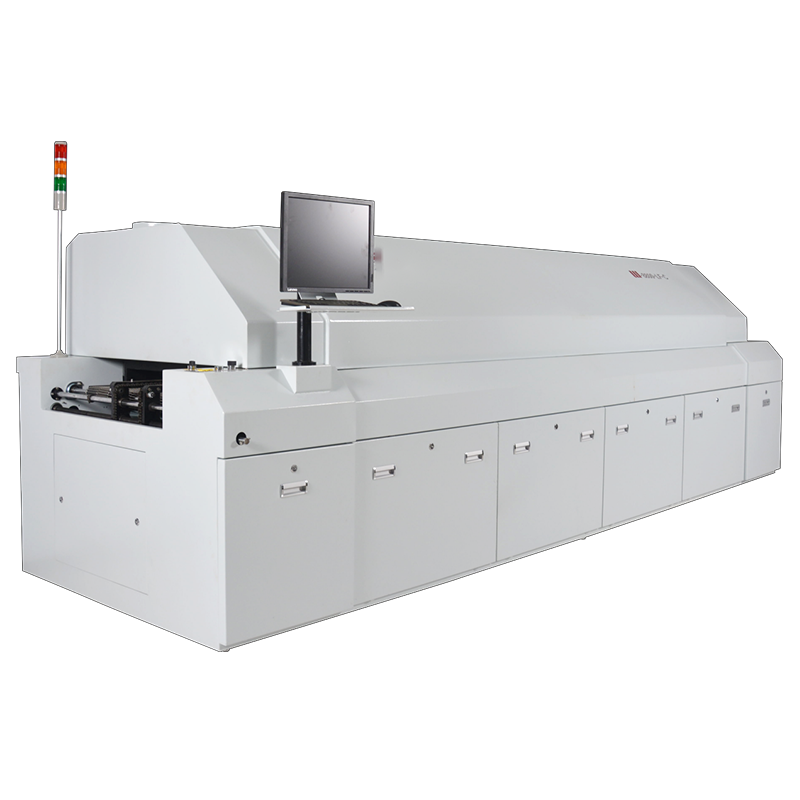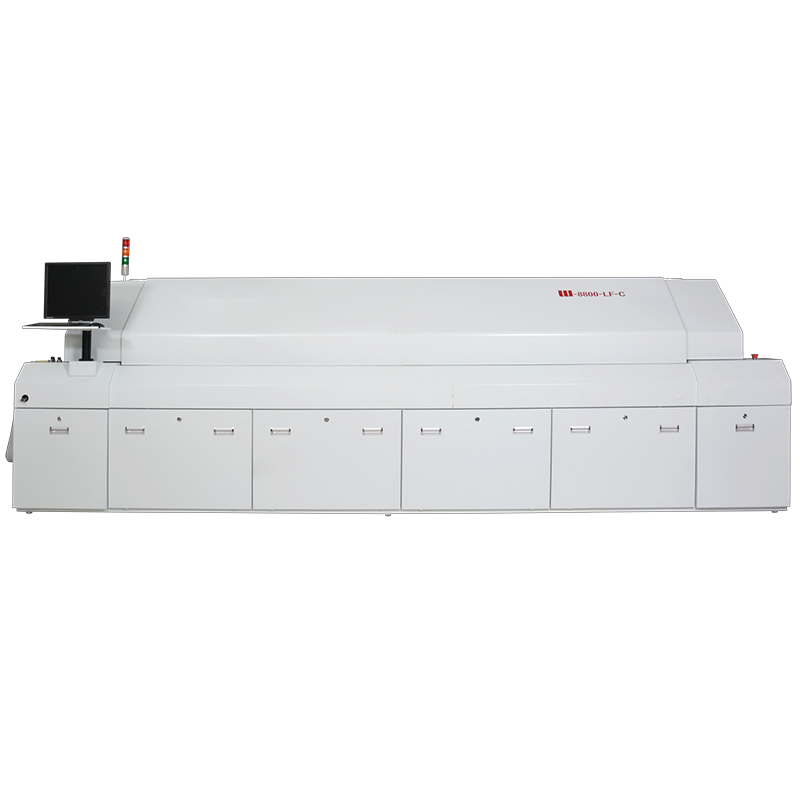이메일 형식 오류
emailCannotEmpty
emailDoesExist
pwdLetterLimtTip
inconsistentPwd
pwdLetterLimtTip
inconsistentPwd


What Is China Solder Reflow Oven
Reflow soldering is a critical process in the manufacturing of printed circuit boards (PCBs), particularly for surface-mount technology (SMT). The process involves melting solder paste to create soldered joints between electronic components and the PCB. Here's a professional take on the subject, focusing on the importance of reflow ovens in China's electronics manufacturing industry:
China's Role in Reflow Soldering and the Significance of Reflow Ovens
China is a global leader in electronics manufacturing, and as such, the reflow soldering process is a vital part of its industrial operations. Reflow ovens are essential for this process, providing the controlled environment necessary for high-quality soldering. These ovens offer precise temperature control and uniform heating, which are crucial for the successful assembly of PCBs.
Key Features of Reflow Ovens
-
Temperature Control:
Reflow ovens must maintain a precise temperature profile to ensure the solder paste melts evenly and creates strong, reliable joints. This is achieved through advanced heating and cooling systems that can handle various soldering requirements, including lead-free processes. -
Convection Heating:
Many modern reflow ovens utilize forced convection heating, which provides even heat distribution across the PCB. This is particularly important for large or high-mass boards that require stable processing conditions. -
Nitrogen Protection:
To prevent oxidation and improve soldering quality, especially with lead-free solders, many reflow ovens are equipped for nitrogen purging. This creates an inert atmosphere that minimizes the risk of oxidation and enhances the soldering process. -
Energy Efficiency:
With the drive for sustainable manufacturing, modern reflow ovens are designed to be energy-efficient, reducing operational costs and environmental impact. -
Automation and Control:
Integrated with advanced software, these ovens allow for automated control and data logging, which is essential for process optimization and quality assurance.
Applications and Benefits
Reflow ovens are used in various applications, from small-batch production in research and development labs to large-scale manufacturing in the automotive, aerospace, and telecommunications industries. The benefits of using reflow ovens include:
- Consistent and reliable soldering quality.
- Reduced production costs through automation.
- Improved yield and reduced waste.
- Enhanced process control and traceability.

Challenges and Solutions
Despite their benefits, reflow ovens present challenges such as the need for skilled operators, high initial investment, and the complexity of maintaining optimal process conditions. However, ongoing technological advancements are addressing these issues through smarter oven designs, user-friendly interfaces, and improved process control software.
Conclusion
In China's thriving electronics industry, reflow ovens play a pivotal role in ensuring the quality and reliability of PCB assembly. As technology continues to evolve, so too will the capabilities of reflow ovens, further solidifying China's position at the forefront of electronics manufacturing.
For more detailed information on specific reflow oven technologies and applications, refer to industry-leading manufacturers like us. This overview provides a snapshot of the current state of reflow soldering and the integral role of reflow ovens in China's electronics production landscape.

